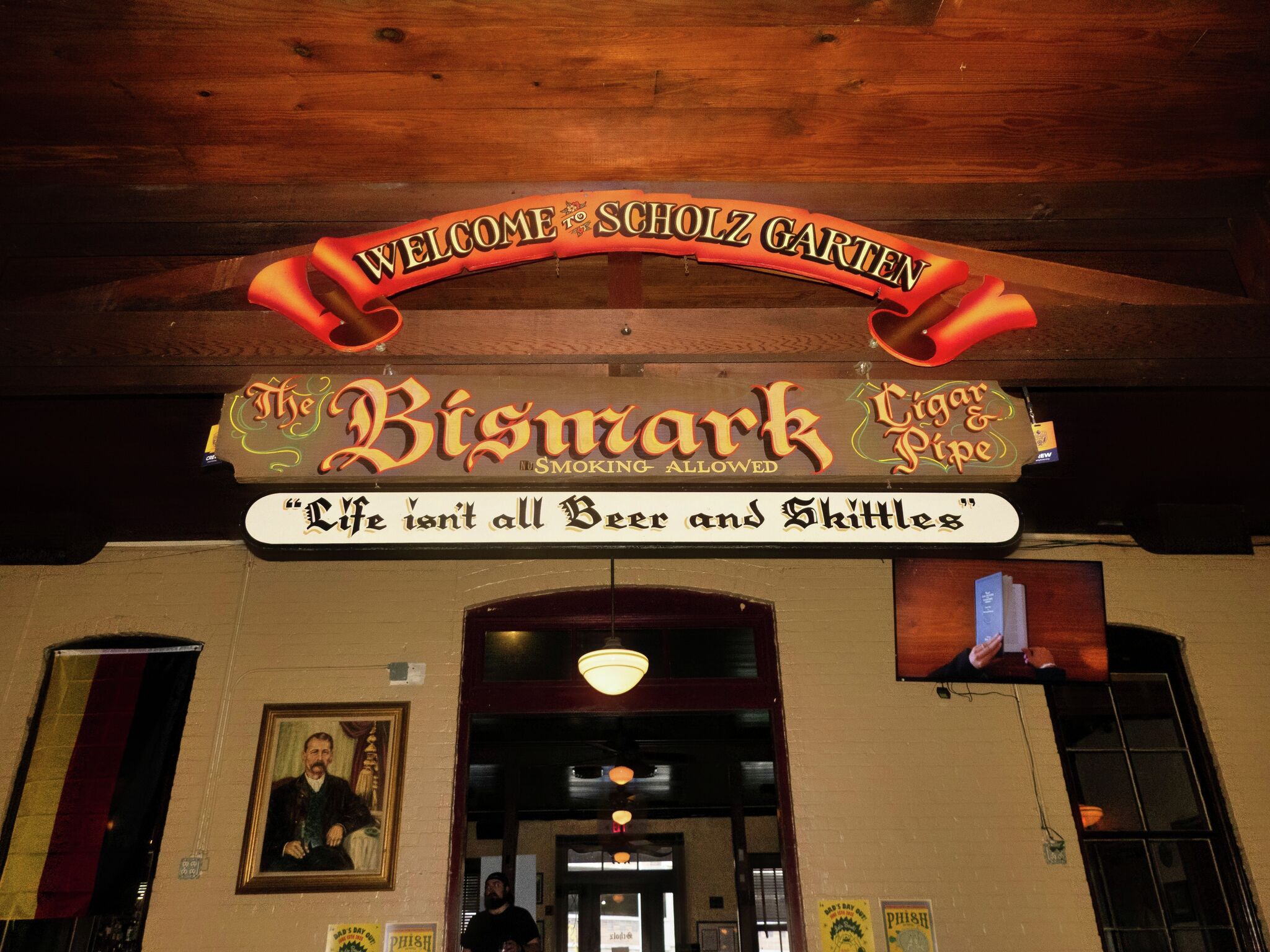How German Immigrants Crafted a Legendary Texas Beer Garden 160 Years Ago

In a city like Austin, where old buildings are torn down and replaced by new ones seemingly overnight, it's hard to imagine a business surviving for more than a decade, let alone for almost 160 years. But that's exactly what Scholz Garten has done.
According to the Texas State Historical Association (TSHA), German immigrant August Scholz first purchased the property at 1607 San Jacinto Blvd. in 1862 for a mere $2,400. Four years later he built a saloon and beer garden on the property and called it Scholz Garden (originally spelled with a D.) It quickly became a hub for a burgeoning German community in Central Texas and a growing Austin population. Almost 160 years later and the thriving beer garden has lived a long life in the Capital City.
A changing Austin
Austin used to be a lot cooler – every Austinite ever, since the 1870s
The 1800s - particularly the 1840s through the 1860s - saw a huge influx of German immigrants to the United States. Central Texas was one of the major landing pads because of organizations like Adelsverein , which assisted Germans in moving to the area. This is when towns like Fredericksburg and New Braunfels were established; and it was right around this time August Scholz opened up his beer garden.
Meanwhile, according to the TSHA, Austin nearly doubled in size in the 1870s due to the newly created Houston and Texas Central Railway.
Scholz's business was booming.
Scholz was THE spot
A gathering place for Texans of discernment, taste, culture [and] erudition – House Resolution No. 68, 1966
Scholz Garten was quite the spot in the late 19th and early 20th century, according to the TSHA. Like Blues on the Green today, Scholz offered a weekly summer series of concerts, featuring orchestral, operatic, and dance music; fireworks displays, a menagerie of animals; and even hot air balloon rides.
During this time, August "Papa" Scholz died and ownership changed hands, first to his stepson, and then to the Lemp Brewing company. In 1901, Scholz became the official meeting spot of the city's last German singing club, the Austin Saengerrunde. In 1908 these singers officially purchased Scholz and still own it today. Shortly after taking ownership, the group erected a new hall on the property, which included the famous Scholz bowling alley.
Surviving Prohibition and Anti-German sentiment
I don't come here as much since I quit drinking. – Former regular, David Hall
The movement toward making alcohol sales illegal started long before Scholz was even established, according to TSHA. It truly began gaining traction around 1916 when "the drys" won enough votes to initiate a national prohibition amendment. By the 1920s, Texas was largely divided on the issue. Legally, saloons and alcohol sales were banned, but the enforcement on this was iffy.
Scholz still operated for a while, selling things like "bone dry beers," but perhaps due to increasing anti-German sentiment post World War I and people's lack of enthusiasm for non-alcoholic drinks, Scholz closed its doors to the public for about a decade starting in 1927.
Even though anti-German sentiment was at a fever pitch during World War II, it seems people's desire for a good drink was even louder. Two years after Texas voters ratified a repeal of the state's dry law, Scholz reopened to the public, happily selling alcohol to a thirsty Austin once again.
A modern day Scholz
I was born here in 1968 and I've always loved Scholz for its live music. With so many "old Austin" places closing, it remains a solid place for the community to gather. – Austinite, Dorion Hardin
When we visited we noticed a mix of regulars and tourists, anywhere from about 25 to 65 years old, mostly clustered in groups inside to avoid the summer heat. It was a Monday after work, and people were there to wind down.
The walls inside are lined with old photos of the building, German paraphernalia, and above the bar, a collection of steins of various sizes. The courtyard - or the beer garten - is the main event at Scholz. In cooler months, it is packed with people after work, before shows at the nearby Moody Center, or on weekends. During SXSW it's a prime event space, with its stage hosting a number of bands.
From the courtyard, there is a separate building that even the manager told us, "Oh, I don't have the key to that building." This building is, of course, home to Scholz's historic (and semi-secret) bowling alley and event space. This area is generally reserved for Saengerrunde members, but is also open for rentals and private events.
All told, spending some time in Scholz and munching on one of their famous pretzels, it was easy to get swept up in a fantasy of the past. The only things that popped this little bubble were the big screen TVs lining almost every wall (indoor and out), the nearby sounds of traffic and sirens, and of course, the concrete buildings surrounding the courtyard on all sides.
Related Reading
Recalled chicken at Walmart, Kroger across US tied to deadly listeria outbreak
NBA draft brings Whataburger freebies, Spurs watch parties to Texas cities
La Panadería's massive Stone Oak location inches closer to opening
Post a Comment for "How German Immigrants Crafted a Legendary Texas Beer Garden 160 Years Ago"
Post a Comment